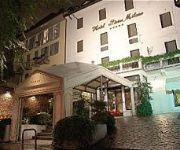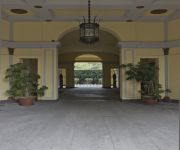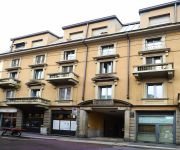Facts and Data
Webpages:
Official Unesco Page
View photos from OUR PLACE the World Heritage collection
Basis Data:
Unesco World heritage since: 1980
Size of heritage: 1.50 ha
Coordinates:
Longitude: 9,171°
Latitude: 45,466°
Summary
The refectory of the Convent of Santa Maria delle Grazie forms an integral part of this architectural complex, begun in Milan in 1463 and reworked at the end of the 15th century by Bramante. On the north wall is The Last Supper, the unrivalled masterpiece painted between 1495 and 1497 by Leonardo da Vinci, whose work was to herald a new era in the history of art.
Location on Map
Show bigger map on Openstreetmap
Church and Dominican Convent of Santa Maria delle Grazie with “The Last Supper” by Leonardo da Vinci
The Church and Dominican Convent of Santa Maria delle Grazie, located in the Province of Milano, Lombardy, is a UNESCO World Heritage site renowned for housing one of the most iconic masterpieces in the history of art, “The Last Supper” by Leonardo da Vinci. This site holds immense historical, cultural, and artistic significance, attracting visitors from all over the world.
History
The construction of the church and convent began in 1463 under the patronage of Duke Ludovico Sforza. The complex was designed by renowned architect Guiniforte Solari and was intended to serve as a mausoleum for the Sforza family. The church was completed in 1490, while the convent was finished in 1497.
During the French occupation of Milan in the late 18th century, the convent was partially destroyed, and the church was used as a stable. However, it was later restored, and in the 19th century, the refectory of the convent gained significant attention due to the discovery of Leonardo da Vinci's masterpiece, “The Last Supper.”
“The Last Supper” by Leonardo da Vinci
Leonardo da Vinci's mural painting, “The Last Supper,” is undoubtedly the most famous and significant artwork within the Church and Dominican Convent of Santa Maria delle Grazie. Created between 1495 and 1498, this masterpiece depicts the biblical scene of the Last Supper of Jesus with his disciples.
The painting measures approximately 460 cm × 880 cm and covers an entire wall of the convent's refectory. Leonardo's innovative technique, known as tempera on gesso, has unfortunately caused the painting to deteriorate over the centuries. However, extensive restoration efforts have been made to preserve this invaluable artwork.
Current State
Today, the Church and Dominican Convent of Santa Maria delle Grazie, along with “The Last Supper,” continue to captivate visitors with their historical and artistic significance. The complex underwent extensive restoration in the 20th century to repair damages caused by bombings during World War II.
Visitors to the site can explore the church's stunning architecture, characterized by its Gothic and Renaissance elements. The convent, with its tranquil cloisters and beautiful gardens, offers a peaceful retreat from the bustling city.
However, the highlight of any visit to Santa Maria delle Grazie remains “The Last Supper.” Due to its delicate condition, access to the painting is strictly regulated to preserve its integrity. Visitors are required to book timed-entry tickets in advance, ensuring a limited number of people can view the masterpiece at a time.
Overall, the Church and Dominican Convent of Santa Maria delle Grazie with “The Last Supper” by Leonardo da Vinci is a testament to the rich cultural heritage of Italy. Its historical significance, architectural beauty, and the enduring allure of Leonardo's masterpiece make it a must-visit destination for art enthusiasts and history lovers alike.
Hotels and places to stay
Pierre
Mokinba Hotels King
Mercure Milano Solari
Palazzo delle Stelline
B&B Hotel Milano Sant'Ambrogio
Sant Ambroeus
Hotel Panizza
Temporary House - Milan Cadorna
Suitime
B&b Sant'Agostino Rooms
Videos from the area
Videos provided by Youtube are under the copyright of their owners.






















